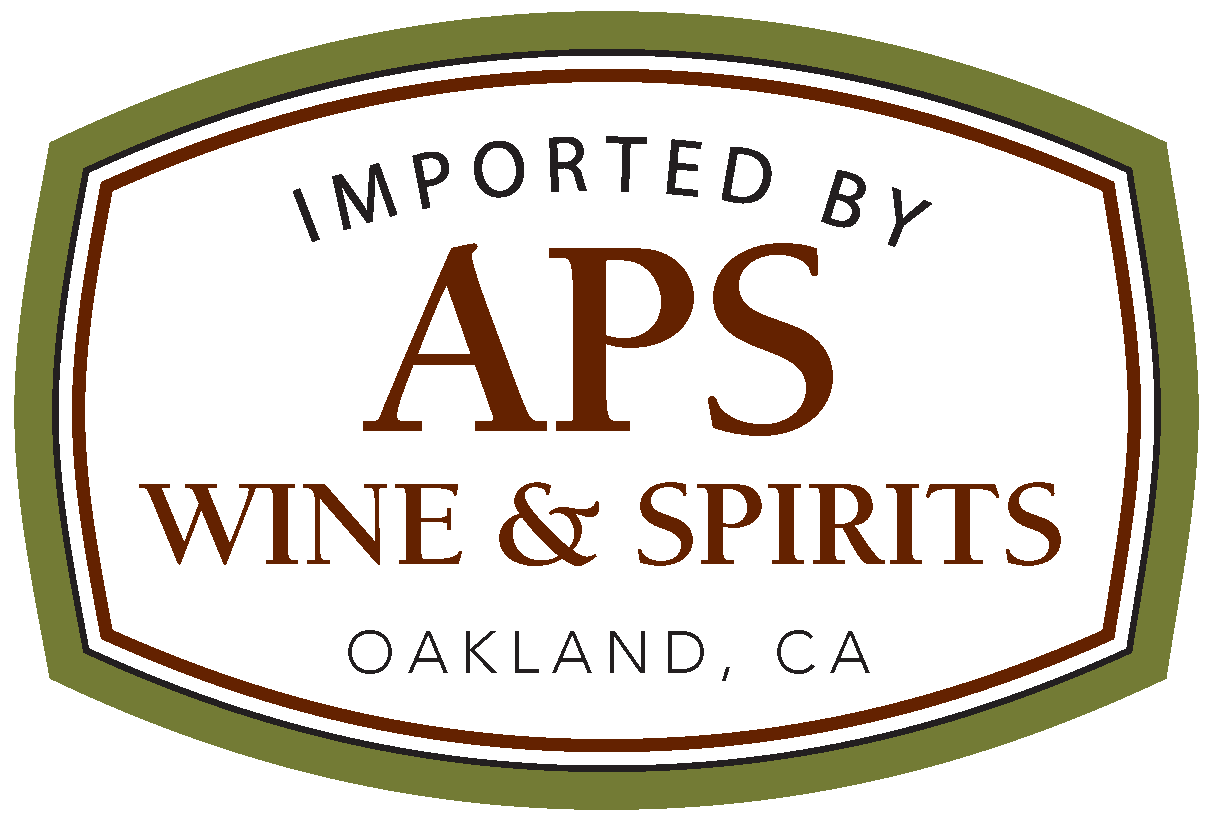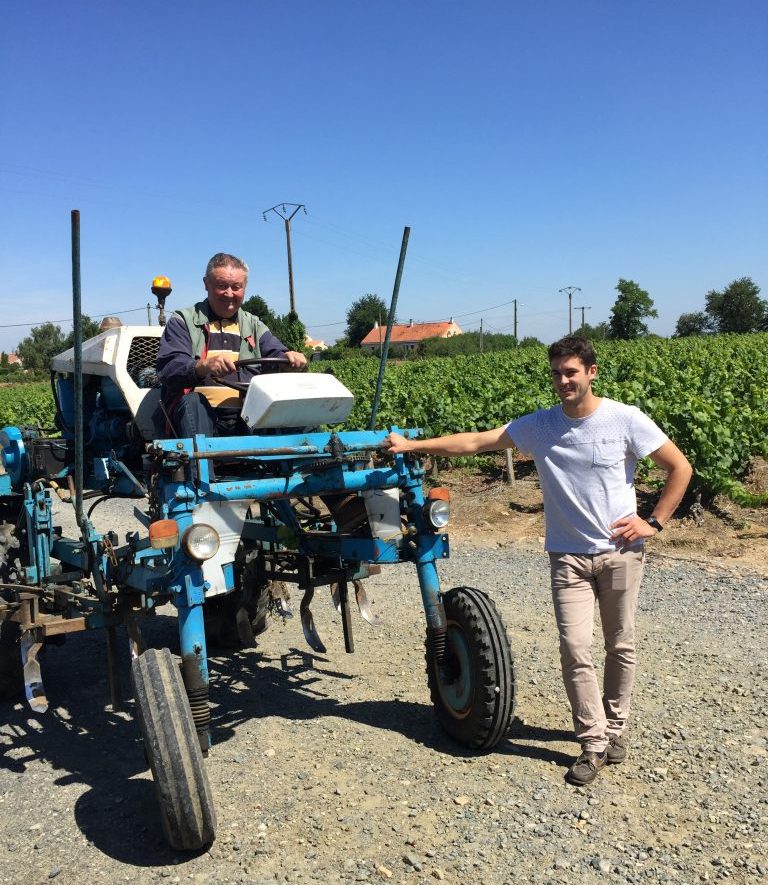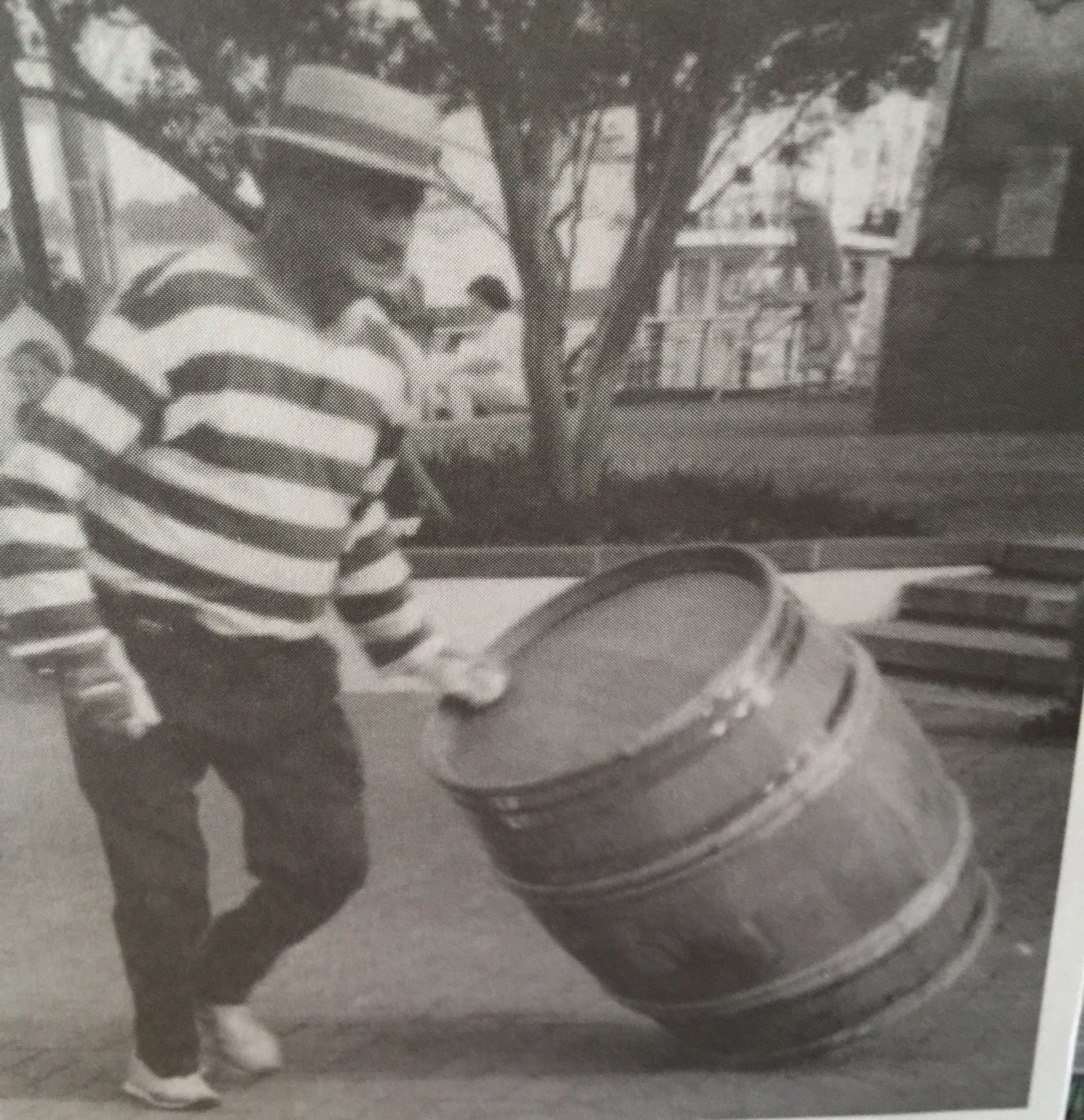GENERATION MUSCADET
AND THE WIT OF SAINT-FIACRE
Pierre-Henri Gadais is fifth generation Muscadet-ian. He’s the grandson of the unforgettable trailblazer Michel Gadais, who along with legendary wine importer and writer Frank Schoonmaker, first bottled Muscadet from Saint-Fiacre in the 1950s. Saint-Fiacre is an “island” of weathered granite and schist-clay soils that sits at the wishbone of the Sèvre and Maine rivers. Their vineyards, some dating back almost 100 years, bear the imprint of the ocean, stamps of lunar-like sea fossils growing old with spirited vines of Melon de Bourgogne.
Muscadet is a sprawling appellation, a blanket of Melon de Bourgogne vines from the heels of the Atlantic, past the city of Nantes, and upward towards the town of Ancenis. So why Melon de Bourgogne and not Melon de Loire? The grape was born in Burgundy in the 13th century and was taken to the Loire in the 16th century where it fueled the demand of Dutch traders who sought prolific grapes for distillation. Some say the name “Muscadet” refers to the “noix de muscade” (nutmeg) that the Dutch added to their distillates, others say the name eludes to the “musk” aroma of the wine. Musky, a term that couldn’t be as far from the truth when speaking about the wines of the Gadais family.
Their vast inventory of old-vines provide a filter of quality, as they meticulously pick and choose which parcels will “make the cut.” One cannot typecast the plotted rows of Saint-Fiacre. From decomposed granite to the crackle and pop of schist, from warmer south-facing vines to cooler north-facing vines, the diversity of “La Cantrie,” “Croix de Pierre,” “Les Masses,” “Vertou” and “”Les Perrières” is tangible. In a region where weather can dramatically affect a house style, Gadais has managed consistency in excellence without the sneaky help of synthetic yeasts or chemicals. Starting with the bounce of “Saint-Fiacre Sur Lie” (the eye-catching white and pink ’50s throwback label), these are some of the best white wines that you are not drinking. If great wine is a delicious expression of history and geography, then the wines of Gadais are a timeless manual.
Pierre Henri Gadais’ solution to Esca…
Esca is a common fungus that causes the vine’s wood to become spongy and soft, leading to lower yields and eventually, plant failure. The vine’s roots, however, remain unaffected. The ancient Roman, Pliny developed an effective treatment for Esca, but his method subsided after the introduction of easy chemical sprays in the 1920s. Pierre-Henri, like many winegrowers of his generation, does not favor the chemical approach in vineyard management. A few years ago, Pliny’s method was resurrected by the younger generation. Simply put, one cuts-out the spongy wood, avoiding the plant’s vital sap channel. Seems easy, right? Well, not really, because the technique requires a chainsaw and moving through an entire vineyard, plant by plant. Now you’re probably thinking, “Chainsaw? Seems harsh and cruel?” Well, in comparison to spraying chemicals, the chainsaw method is gentle and friendly. Watch as Pierre-Henri demonstrates his graceful manpower skills….
Pierre Henri is justifiably proud of his 2022 Muscadet “Saint-Fiacre.” The growing season oscillated between periods of frost and drought, but also sublime sunny days punctuated by perfectly timed rain, to arrive at some of the finest Melon de Bourgogne fruit he has seen. Add to that his stellar vineyards, attentive farming, and skilled “touch” as a winemaker and the result here defines forward-looking Muscadet in a classic frame. His wine is as good as any bottling made by the three generations of Gadais winemakers who preceded him.
Every vintage is different and every vintage challenges the winemaker…Even though 2022 turned out fabulous, it wasn’t guaranteed. The success of Pierre Henri this year is, no doubt, due in part to the generosity of Mother Nature, but the rest is down to him. People may not remember that Europe generally, and the western Loire around Nantes in particular, experienced extreme heat in 2022. Pierre Henri tells us it was greater than anything his elders ever experienced. Lots of vines suffered in the heat, either shutting down for lack of water or getting sun burned. Well, Pierre Henri’s vines thrived in the heat. Since, 2016 he has been plowing the soil between rows, driving the roots down to where the water doesn’t dry up. He also tried something new: he sprayed a natural clay mixture on his vines at the height of the heat coloring them white and eliminating heat stress. In Pierre Henri’s words, “it helped the vines relax.” When the rain finally fell two weeks before the harvest in August, his vines were perfectly positioned.
Three vineyards make up this wine: 45% Croix de Pierre, 30% Les Encloses and 25% Les Pétières. Croix de Pierre faces north and has soils of micaschist, with a resulting bright natural acidity in the fruit to bring freshness to the blend. Les Encloses is a monopole that has been with Pierre-Henri’s family since his great-grandfather first farmed it in the 40’s and 50’s. It is right next to the bank of the Sèvre river, which provides a moderating influence against temperature extremes. More than that, says Pierre Henri, its mother rock is gneiss giving the fruit great complexity and aging potential. It’s at the top of his list of favorite sites. The last site that Pierre Henri deployed in the blend is Les Pétières, a south-facing vineyard, also on gneiss with 18-year vines (youthful, but not young). Les Pétières brings fruitiness and round mouth feel. The result is a balanced and harmonious wine that can stretch far beyond the traditional seafood confines of Muscadet pairing. Aromatic, fruity, dense and refined with fragrant blooms (acacia) in the nose, brilliant acidity and great length on the palate…there’s citrus and stone fruit (yuzu and nectarine) in there for sure. Perfectly dry and light in alcohol. Really fine.


